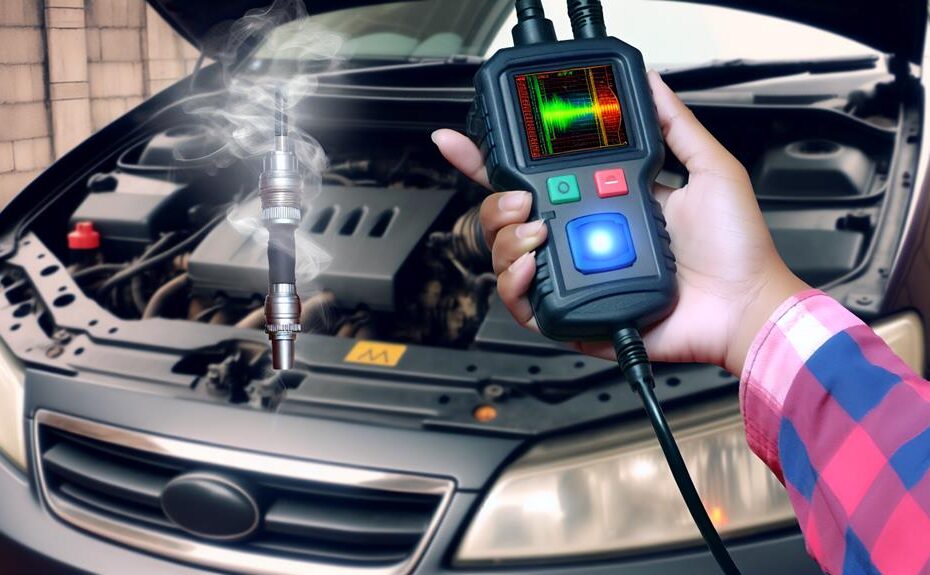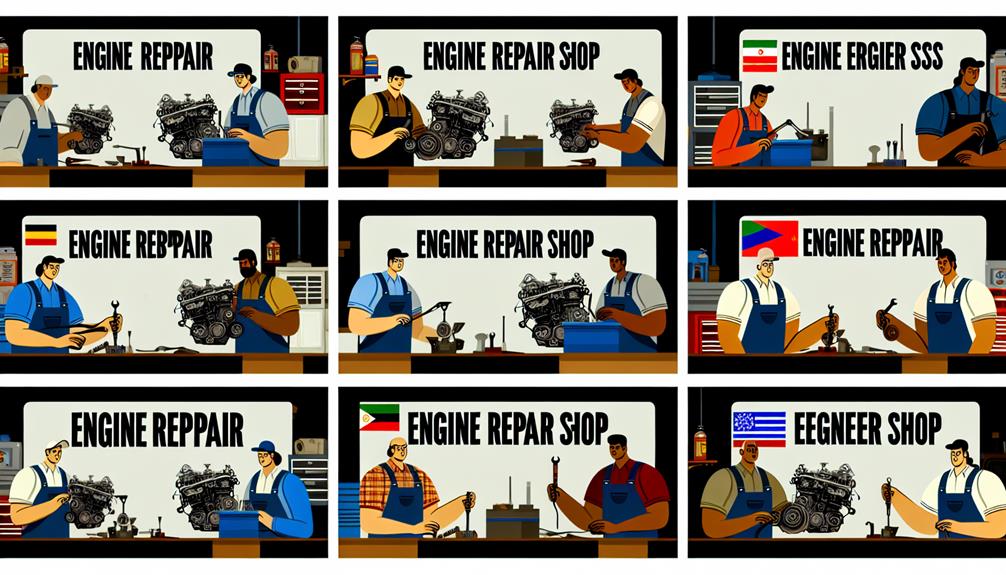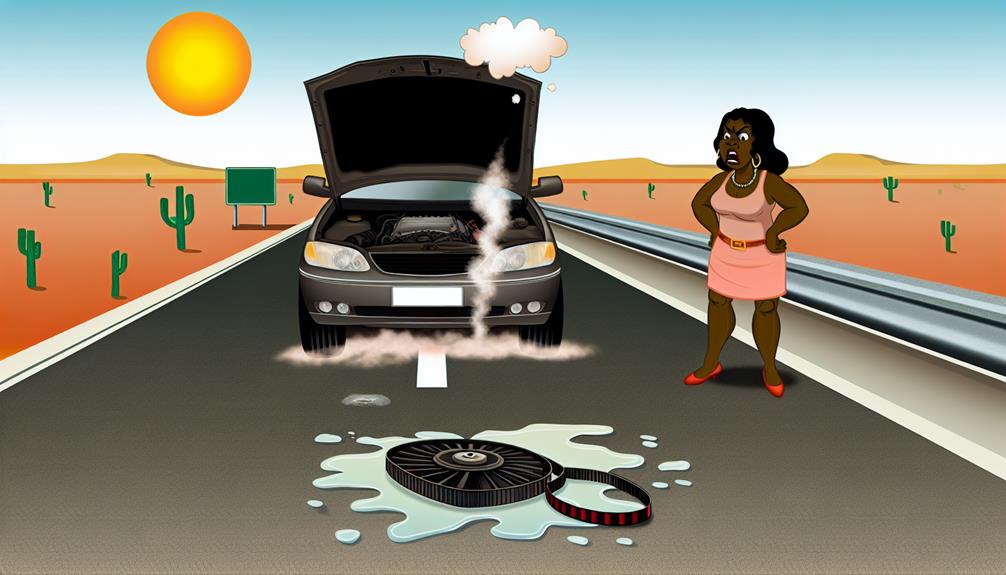Did you know that engine misfires are one of the most common problems that car owners face? They can be frustrating and can even lead to costly repairs if left unchecked.
But fear not, because in this discussion, we will provide you with some valuable troubleshooting tips for diagnosing engine misfires. From inspecting the ignition system to analyzing the engine control module, we will guide you through the steps to identify the root cause of the misfire.
So, if you're tired of dealing with a rough-running engine and want to get back on the road smoothly, keep reading to uncover the secrets of diagnosing engine misfires.
Key Takeaways
- Regular inspection of the ignition system, including the ignition coil and distributor cap, is crucial for identifying and replacing any damaged or faulty components.
- The fuel system should be checked for clogs, dirt, and proper fuel delivery to ensure that the engine is receiving the correct amount of fuel.
- Performing a compression test can help evaluate the condition of the engine's cylinders and identify any potential internal engine issues.
- Examining spark plugs for carbon deposits and evaluating ignition timing can provide valuable insights into the performance of the ignition system and potential causes of misfires.
Ignition System Inspection
To properly diagnose engine misfires, it's crucial to conduct a thorough inspection of the ignition system. This involves examining the ignition coil and distributor cap.
The ignition coil is responsible for generating the high voltage needed to create a spark in the spark plugs. A faulty ignition coil can lead to weak or no spark, resulting in engine misfires. To inspect the ignition coil, start by visually examining it for any visible signs of damage, such as cracks or corrosion.
Next, use a multimeter to test the resistance across the primary and secondary windings of the coil. If the resistance readings are outside the specified range, it indicates a faulty coil and it should be replaced.
Moving on to the distributor cap, it's important to check for any signs of wear, such as carbon tracking or cracks. Inspect the cap for any moisture or oil contamination as well. If any issues are found, the distributor cap should be replaced.
Fuel System Check
Inspect the fuel system thoroughly to identify any potential issues causing engine misfires. Start by performing a fuel injector inspection. Check for clogged or dirty injectors that can disrupt the fuel spray pattern and lead to misfires. Remove the injectors and visually inspect them for any signs of debris or buildup. Clean or replace any faulty injectors to ensure proper fuel delivery.
Next, measure the fuel pressure to ensure it's within the manufacturer's specifications. Use a fuel pressure gauge to check the pressure at the fuel rail. Low fuel pressure can result in lean fuel mixture and misfires, while high pressure can cause rich fuel mixture and fouled spark plugs. If the pressure is outside the recommended range, inspect the fuel pump, fuel filter, and fuel pressure regulator for any potential issues.
Additionally, check for any fuel leaks in the system. A leaky fuel line or injector can cause a drop in fuel pressure, leading to misfires. Inspect all fuel lines and connections for signs of leakage or damage. Repair or replace any faulty components as necessary.
Compression Test

Perform a compression test to evaluate the condition of the engine's cylinders and identify any potential issues contributing to engine misfires. A compression test measures the cylinder pressure and provides valuable information about the internal condition of the engine. By analyzing the cylinder pressure, you can determine if there are any compression leaks or inconsistencies that could be causing the misfire.
To perform a compression test, you'll need a compression tester and a spark plug socket. Start by removing all the spark plugs from the engine. Then, attach the compression tester to the first cylinder and crank the engine for a few seconds. Record the reading on the gauge. Repeat this process for each cylinder.
The cylinder pressure analysis will help you identify if there's any variation in compression between cylinders. If you notice a significant difference in pressure readings, it could indicate worn piston rings, a blown head gasket, or other internal engine issues.
In addition to the compression test, you may also consider performing a leakdown test. This test involves pressurizing each cylinder and measuring the amount of air leakage. It can help pinpoint the exact location of the compression loss, providing further insight into the cause of the misfire.
Spark Plug Examination
After conducting a compression test to evaluate the internal condition of the engine, the next step in diagnosing engine misfires is to examine the spark plugs. Spark plug examination provides valuable insight into the performance of the ignition system and can help identify any issues that may be causing the misfire.
One important aspect to consider during spark plug examination is the evaluation of ignition timing. This involves checking whether the spark plug fires at the correct moment in the combustion cycle. A misfire can occur if the ignition timing is too advanced or too retarded. By inspecting the spark plugs, you can determine if the timing is within the manufacturer's specified range.
Another factor to assess is the accumulation of carbon deposits on the spark plugs. Carbon deposits can build up over time, leading to a reduction in spark plug performance. Excessive carbon deposits can cause the spark plug to misfire or fail to ignite the air-fuel mixture properly. By examining the spark plugs for carbon deposit accumulation, you can determine if this is a contributing factor to the engine misfire.
Engine Control Module (ECM) Analysis

To analyze the Engine Control Module (ECM) and diagnose engine misfires, it's crucial to thoroughly examine the data stored within the module. The ECM is responsible for monitoring and controlling various engine functions, including fuel injection, ignition timing, and emissions. By analyzing the data stored in the ECM, you can identify any potential issues that may be causing engine misfires.
One important step in analyzing the ECM is to check for any available software updates. Manufacturers often release updates to address known issues and improve engine performance. These updates can be obtained from the manufacturer's website or through a dealership. By ensuring that your ECM has the latest software version installed, you can eliminate any potential software-related issues that may be causing misfires.
Another important aspect of ECM analysis is inspecting the wiring connected to the module. Over time, wiring can become damaged or corroded, leading to poor electrical connections. This can result in misfires and other engine performance issues. By thoroughly inspecting the ECM wiring, you can identify any potential wiring issues and address them accordingly.
Frequently Asked Questions
How Often Should the Ignition System Be Inspected for Potential Misfires?
You should inspect the ignition system regularly for potential misfires. Common causes of engine misfires include faulty spark plugs, ignition coils, and fuel injectors. It's important to address these issues promptly to prevent further damage.
What Are Some Common Symptoms of a Fuel System Issue That May Mimic Engine Misfires?
When experiencing engine issues, it can be difficult to determine if it's a fuel system problem or an actual misfire. Look out for symptoms like rough idling, hesitation, and poor acceleration, which can mimic engine misfires.
Is a Compression Test Necessary for Every Engine Misfire Diagnosis, or Are There Specific Cases Where It Is Not Required?
You might be wondering if a compression test is always necessary for engine misfire diagnosis. Well, there are cases where you can find alternatives to a compression test and still diagnose the misfire effectively.
Are There Any Visual Signs or Specific Characteristics to Look for During a Spark Plug Examination That Can Indicate an Engine Misfire?
When examining spark plugs, look for signs such as worn electrodes, carbon deposits, or oil fouling. These can indicate an engine misfire. Common causes include ignition problems, fuel delivery issues, or mechanical failures.
Can an Engine Misfire Be Caused by a Faulty Engine Control Module (Ecm), and if So, How Can It Be Diagnosed and Resolved?
If you suspect an engine misfire caused by a faulty ECM, diagnose and resolve it by checking for error codes, performing voltage tests, and inspecting the ECM for physical damage. Common causes of engine misfires include spark plug issues and fuel delivery problems.
Conclusion
In conclusion, when troubleshooting engine misfires, a thorough inspection of the ignition system, fuel system, compression, spark plugs, and the engine control module (ECM) is essential.
By carefully examining these components, one can pinpoint the root cause of the misfire and take appropriate measures to address the issue.
Following these troubleshooting tips with technical precision and analytical thinking will ensure efficient diagnosis and resolution of engine misfires.



